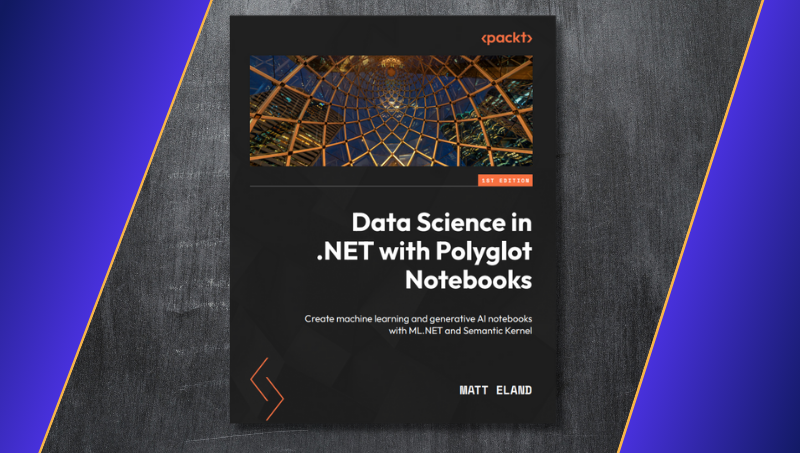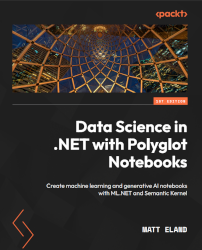Getting Data & Code into Your Notebooks
Resources for Chapter 3 of Data Science in .NET with Polyglot Notebooks

Chapter 3 of Data Science in .NET with Polyglot Notebooks highlights how to import code and data into your notebooks and introduces the DataFrame class from the Microsoft.Data.Analysis NuGet package. This chapter talks about CSV, TSV, JSON, SQL, KQL, and object data sources and how all of these different sources can be integrated into a DataFrame for further analysis.

Learn data science using ML.NET, OpenAI, and Semantic Kernel
Data Science in .NET with Polyglot Notebooks teaches experienced .NET devs the fundamentals of data science, machine learning, and AI orchestration. It covers topics like ML.NET, OpenAI, Semantic Kernel, career development, and more.
Buy Data Science in .NET with Polyglot Notebooks on Amazon or through Packt in print and digital formats.
Additional Resources
These resources and notes are likely to be helpful while reading Chapter 3 of Data Science in .NET with Polyglot Notebooks.
- More about the #!import magic command
- More about the #r magic command
- Connecting to Data in Polyglot Notebooks
- Discussion of support for referencing C# Projects
- What is REST?
- PowerShell Overview
- SQL authentication management in Polyglot Notebooks
- SQL Queries
- Azure SQL Databases
- Azure Data Explorer
- Kusto Query Language overview


